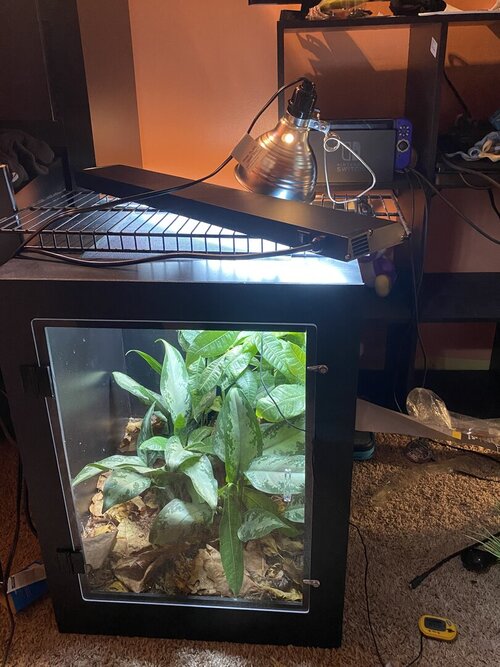Uri
Avid Member
Now I have purchased a carpet chameleon and have te enclosure set up although I still am fine tuning the temperature and I haven’t found much information on exact numbers that are good although I have seen suggestions that their care is almost the same as a panther only smaller this is a pvc enclosure with a screen top and holes I drilled for chimney effect airflow it is bioactive with a tropical mix I use coco coir, orchid bark, sphagnum moss, sand and just a little charcoal mostly from my spring tail culture. There is a drainage layer although not very deep due to the fact that well it shouldn’t fill up otherwise I’m overwatering i added a rather large amount of springtails and if needed I’ll add supers to help aerate the soil I also have dwarf white isopods. My humidity levels are fine with 50-60 during the day and 90 at night with a 100% spike during the initial mist. The enclosure is above the minimum size of 18x18x24. My basking around 85 temperature even with the light on all day I will not have it on all day tho only in the morning for a few hours and periodically to keep my ambient temperature in the mid 70s what basking temp should be adequate. I can always fine tune the temperatures with raising the light shortening the time it’s all etc.





